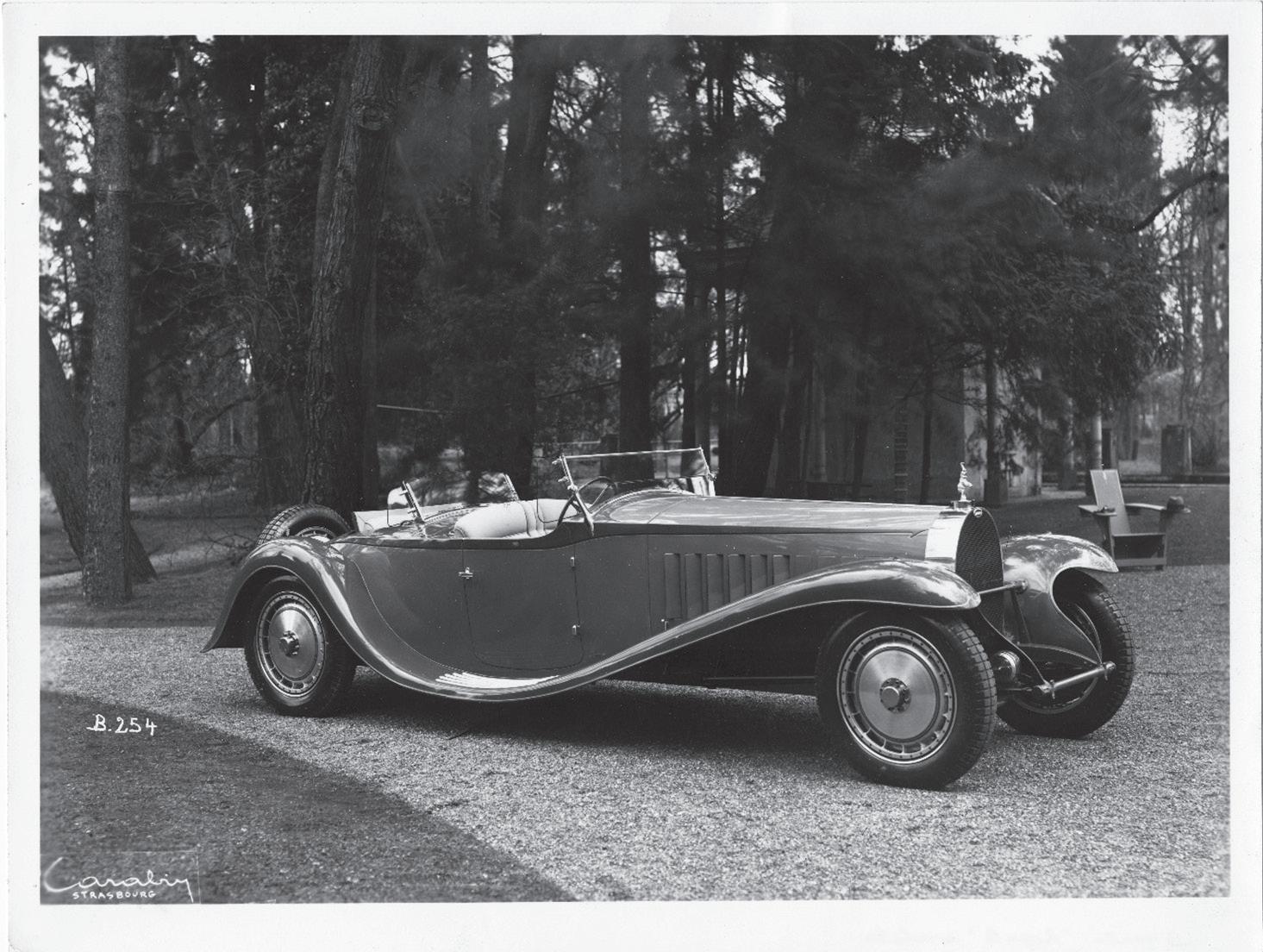RESIDE SPRING 2021
BUGATTI’S LEGACY THE STORY BEHIND ONE OF THE WORLD’S MOST EXPENSIVE CARS
ugatti’s legacy would be assured, even if the dormant nameplate B hadn’t been revived for awesome
supercars circa 1991. That’s because, before World War II, the company, under founder Ettore Bugatti, produced a series of exquisite and winning racers, plus elegant and mechanically advanced road cars bodied by the world’s premier coachbuilders. Restorers who dismantle Bugattis discover that every part, down to the smallest nut and bolt, is beautifully designed. Virtually every car to wear the badge, through to today, is highly prized and commands extraordinarily high prices in the showroom or at auction. In 2019, the one-of-a-kind Bugatti “La Voiture Noire,” built for the company’s 110th anniversary, sold for €16.7 million, making
50
it the most expensive new car ever. “It is an amazing legacy that Ettore has left to the world,” says Matt Baran, editor of the American Bugatti Club magazine Pur Sang and the current custodian of his grandfather’s 1938 Bugatti Type 57 Ventoux Coupe. Ettore Bugatti was Italian, a mechanical genius from a family of craftsmen and designers. He built his first car at age 18, a commission for a count. It won a prize and led to steady work. When it was launched by Ettore in 1909, the Molsheim Bugatti factory was in Germany. But after World War I, the entire Alsace region was ceded to France, and Bugatti chose to stay on there—initially producing mostly race cars. The lightweight Type 10 of 1910 was the first of Bugatti’s “Pur Sang”
(thoroughbred) cars. Like Enzo Ferrari, Ettore considered his road cars as necessary to fund his passion—racing. With the five-liter, 100-horsepower Type 18 (1912 to 1914), he got both a road and race car, capable of a heady 100 miles per hour. Only seven were built, but as probably the fastest street cars in the world at that time, they got noticed. Ettore himself raced the first in the series, nicknamed “Black Bess.” That car has a vivid history, having been owned by French flying ace Roland Garros and campaigned extensively in England. It was sold at auction in 2009 for €2.4 million. The very successful Type 13 “Brescia” came in second at the French Grand Prix at Le Mans in 1911. After an interruption for World War I, Ettore dug up some Type 13s that had been dismantled and, with continuous refinements, went racing again— finishing first, second, third, and fourth at the Brescia Grand Prix in 1921. The company’s first production touring car, the rakish Type 30, had an inline eight-cylinder engine and was an early user of front brakes. It appeared in 1922 and 600 were sold by 1926. But greater things were to come. The gorgeous and deceptively delicate-looking Type 35 (introduced in 1924) was Bugatti’s most successful race car, winning an astonishing 1,000 races, including the Grand Prix World Championship in 1926. Standard practice was for Bugatti to develop a model, then subject it to a process of continual refinement—adding supercharging, for instance. “When they had a better idea, it went into the car,” says Tom Clifford, the Bugatti club’s archivist and the owner of a Type 37A he has raced enthusiastically. “Ettore was a genius at mechanical innovations.”
This page: A Bugatti Royale, only six of which were produced. Opposite page: The Bugatti Chiron Pur Sport at the Hockenheimring track in Germany.

























